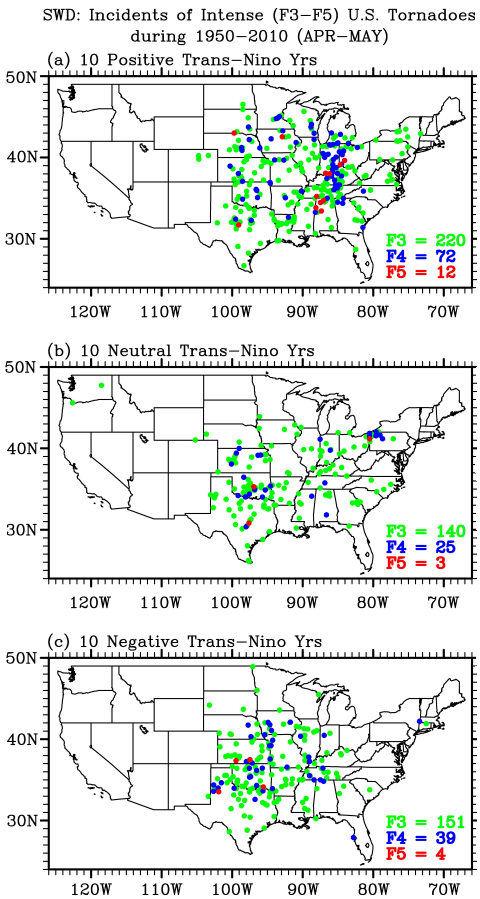By Sang-Ki Lee, and Robert Atlas
The record-breaking U.S. tornado outbreaks in the spring of 2011 prompt the need to identify long-term climate signals that could potentially provide seasonal predictability for U.S. tornado outbreaks. A new research led by scientists in the Physical Oceanography Division of NOAA-AOML used both observations and model experiments to show that a positive phase Trans-Niño may be one such climate signal.
According to the research article accepted for publication in the Journal of Climate, among the top ten extreme outbreak years during 1950-2010, seven years including the top three are identified with a strongly positive phase Trans-Niño. The number of intense tornadoes in April – May is nearly doubled during the top ten positive Trans-Niño years from that during ten neutral years (Figure). Trans-Niño represents the evolution of tropical Pacific sea surface temperatures (SSTs) during the onset or decay phase of the El Niño-Southern Oscillation. A positive phase Trans-Niño is characterized by colder-than-normal SSTs in the central tropical Pacific and warmer-than-normal SSTs in the eastern tropical Pacific. Modeling experiments suggest that warmer-than-normal SSTs in the eastern tropical Pacific work constructively with colder-than-normal SSTs in the central tropical Pacific to force a strong and persistent teleconnection pattern that increases both the upper-level westerly and lower-level southeasterly over the central and eastern U.S. These anomalous winds advect more cold and dry upper-level air from the high-latitudes and more warm and moist lower-level air from the Gulf of America converging into the east of the Rockies, and also increase both the lower-tropospheric (0 ~ 6 km) and lower-level (0 ~ 1 km) vertical wind shear values therein, thus providing large-scale atmospheric conditions conducive to intense tornado outbreaks over the U.S.
